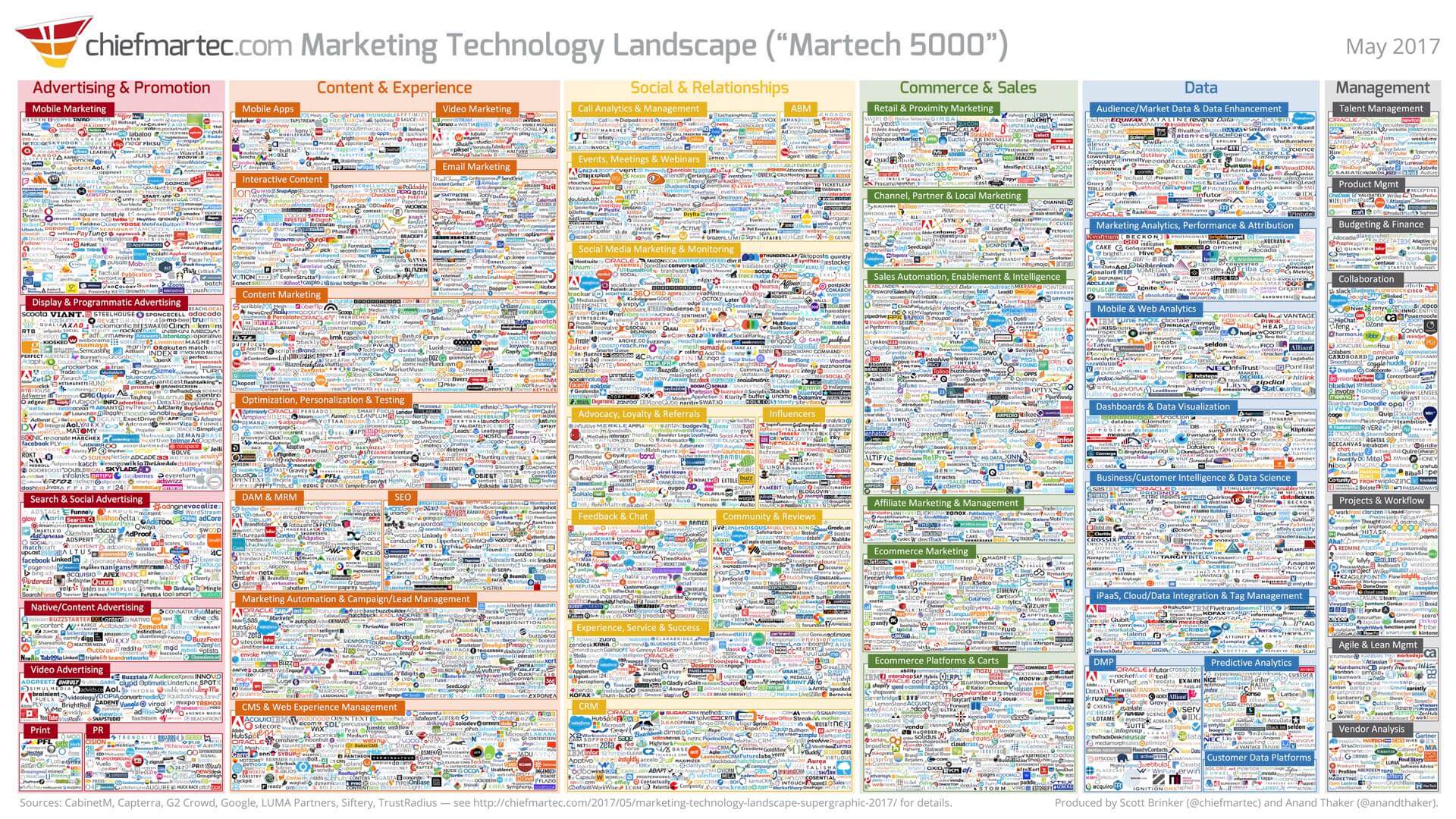We've launched a new podcast. In it, we're planning to talk about a range of subjects, each closely related to the later stages of the sales cycle — that often misunderstood place where sales and marketing intersect.
In our first episode, we're looking at the chaotic world of marketing technology.
You’ve probably seen the MarTech 5000, which is a compilation of all the companies selling products and services into the marketing technology space. At last count, there were roughly 7,500 products available.

It is virtually impossible to understand all of your options, much less test them to know which are best for you. So, when confronted with all of the marketing-speak; the in-rush of email; and the pitches, which are rarely more than variations on a theme, how do you make sense of that many choices?
In the first episode of our podcast, Aligned, we spoke with Lori Sullivan, marketing director at the tech company Fleetio.
Lori and her team drive most of the company’s growth through inbound strategies and tight alignment with their salespeople. And that means they are heavily reliant on marketing technology to attract and convert potential clients into actual clients.
Lori and the team she developed have been in the thick of the technology battle for years now, so much so that she’s as excited when she learns a product doesn’t fit their needs as she is when she finds a perfect match. Only a veteran of the fight understands the value of a “no.”
In a recent talk for the first episode of Aligned, Lori offered some insight into how they go about choosing which products fit into their tech stack.
The core is everything. The core of any tech stack is built from a solid CRM system complemented by a marketing automation technology. Which is right for you? Again, that depends. Books have been written about the various options, but you serve yourself best when the choices you make give you the most flexibility possible.
Determine what you need. Every company’s needs will be unique, obviously. Whether it’s analytic tools or content/UX tools, e-commerce or data collection tools — you have to begin with your own strategic goals.
Integration. This is critical. Which products integrate with your core CRM/MAT tools? Above all else, you are trying to avoid data silos, where customer data is trapped in a singular tool and can’t be integrated with your other systems. The best core products are founded on the principle of integration. Once you’ve chosen your CRM/MAT, you can narrow the field of other options to those that first integrate with your core.
Feature set. Once you’ve narrowed your search to those that integrate with your existing technology, do they do what you need? Is the tool robust? Can it scale with your business? Many tools promise to do the same job. Which has the features that fit what you need now?
User experience design. People often overlook this issue, but how easy are the tools to use that you are considering? The harder they are, the more you have to work at it, the less likely you are to use them over time.
There’s more to choosing the elements of your tech stack, of course. To hear our entire conversation on our podcast, Aligned, follow the link.


